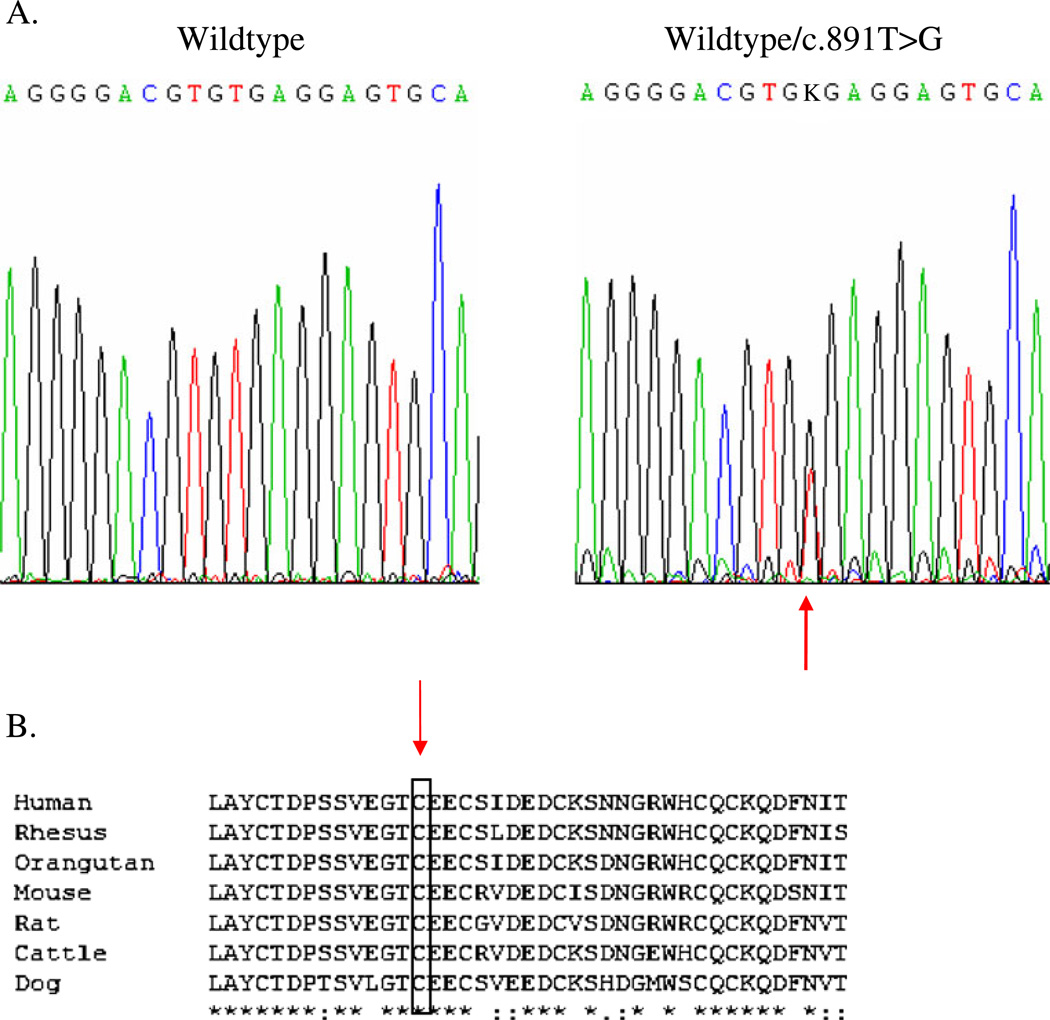Fig. 6.
a The wildtype sequence of a portion of exon 4 of UMOD is shown on the left. The panel on the right shows the sequence from one of the affected individuals, with the arrow indicating the heterozygous change (c.891T>G) which is predicted to cause substitution of a conserved cysteine residue by tryptophan. The father and all three daughters were heterozygous for the change. b Alignment of a portion of the amino acid sequence of human uromodulin (GenBank accession NP_003352) with the uromodulin of rhesus monkey (XP_001087334), orangutan (NP_001126801), murine (NP_033496), rat (NP_058778), bovine (NP_776638), and dog (NP_001003003). Asterisk Residues completely conserved, rectangle cysteine residue affected by the missense change in this family, colon conserved substitutions, period semi-conserved substitutions

